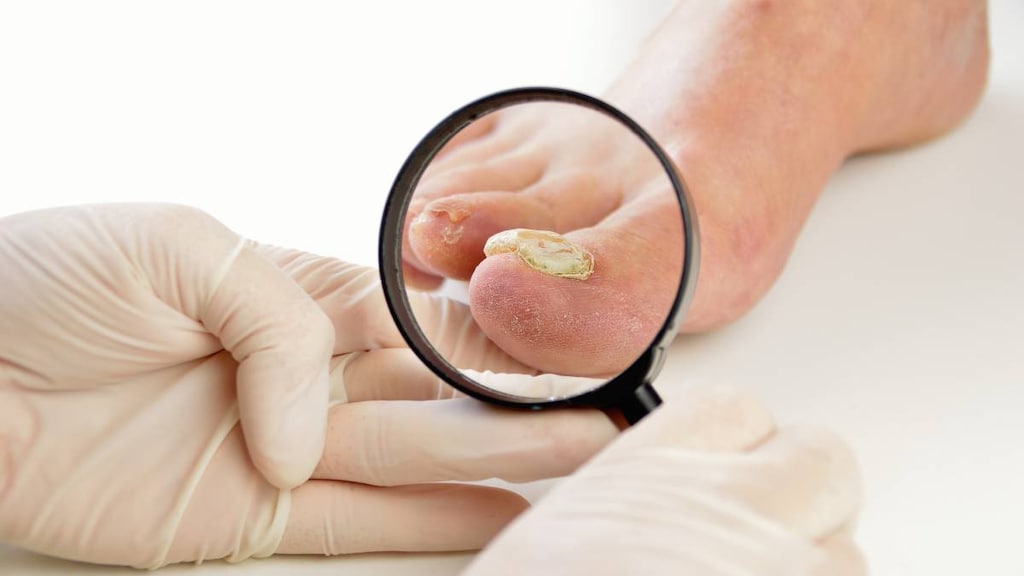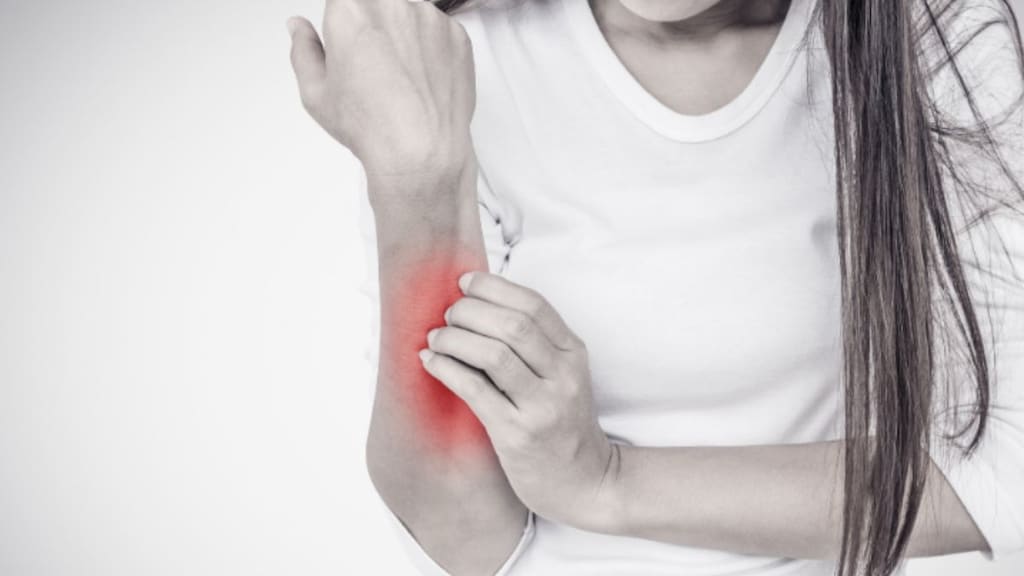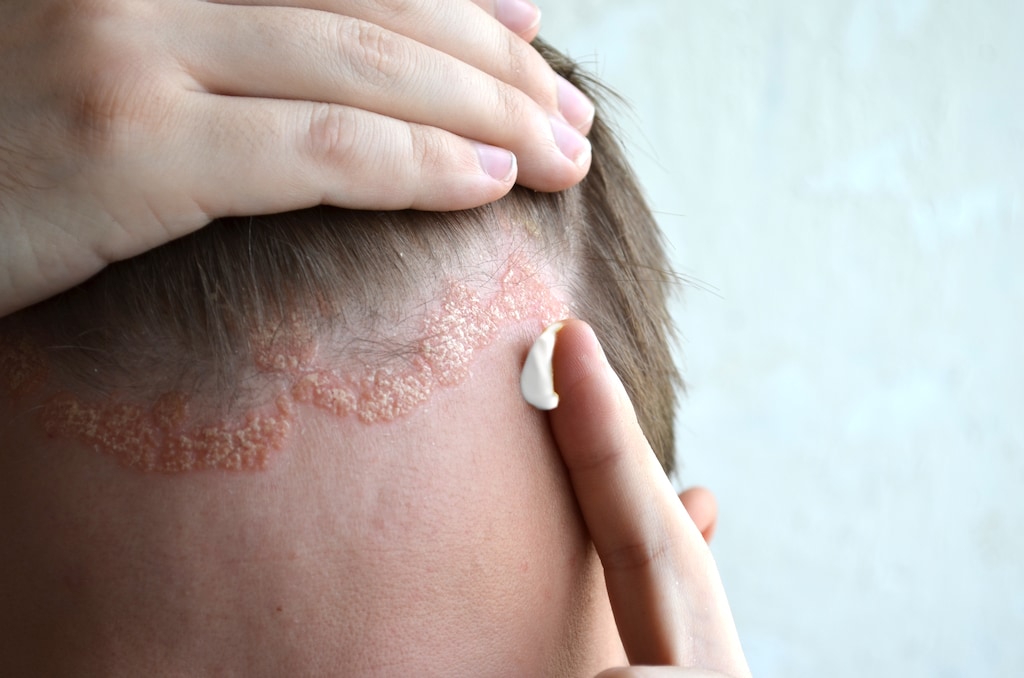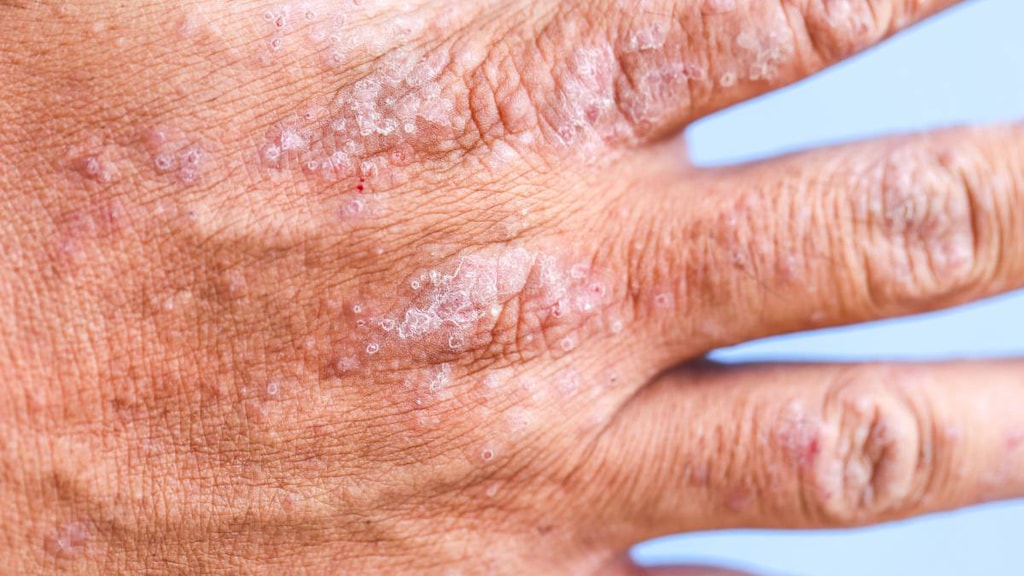Dosage Forms
Excipient information presented when available (limited, particularly for generics); consult specific product labeling. [DSC] = Discontinued product
Cream, External:
Halog: 0.1% (30 g, 60 g, 216 g) [contains cetyl alcohol, propylene glycol]
Generic: 0.1% (30 g, 60 g)
Ointment, External:
Halog: 0.1% (30 g [DSC], 60 g)
Pharmacology
Mechanism of Action
Topical corticosteroids have anti-inflammatory, antipruritic, and vasoconstrictive properties. May depress the formation, release, and activity of endogenous chemical mediators of inflammation (kinins, histamine, liposomal enzymes, prostaglandins) through the induction of phospholipase A2 inhibitory proteins (lipocortins) and sequential inhibition of the release of arachidonic acid. Halcinonide has high range potency.
Pharmacokinetics/Pharmacodynamics
Absorption
Dependent on strength of preparation, amount applied, integrity of skin at application site, vehicle, and use of occlusive dressing; increased in areas of skin damage, inflammation, or occlusion.
Metabolism
Primarily hepatic
Excretion
Urine
Use: Labeled Indications
Steroid-responsive dermatoses: Relief of inflammatory and pruritic effects of corticosteroid-responsive dermatoses (high potency topical corticosteroid)
Contraindications
Hypersensitivity to halcinonide or any component of the formulation
Dosage and Administration
Dosing: Adult
Steroid-responsive dermatoses: Topical: Apply to affected area sparingly 2 to 3 times daily. Therapy should be discontinued when control is achieved; if no improvement is seen, reassessment of diagnosis may be necessary.
Dosing: Geriatric
Refer to adult dosing.
Dosing: Pediatric
Note: Administration of topical corticosteroids to children should be limited to lowest dose possible for shortest period of time to avoid HPA axis suppression.
Steroid-responsive dermatoses: Topical: Children and Adolescents: Refer to adult dosing.
Administration
Topical: For external use only; not for oral, ophthalmic, or intravaginal use. Wash hands before and after use. Avoid use of topical preparations on weeping or exudative lesions.
Occlusive dressings may be used for the management of psoriasis or other recalcitrant conditions. Gently rub or apply a small amount of cream or ointment to the affected area. Cover with a pliable nonporous film and seal the edges. If additional moisture is needed on the affected area, it may be moistened with water prior to applying medication; a damp cloth may also be applied to the lesion before the dressing is applied. Cream or ointment should be reapplied at each dressing change. Discontinue use of occlusive dressings if an infection develops.
Storage
Store at room temperature; avoid excessive heat ≥40°C (≥104°F)
Drug Interactions
Aldesleukin: Corticosteroids may diminish the antineoplastic effect of Aldesleukin. Avoid combination
Corticorelin: Corticosteroids may diminish the therapeutic effect of Corticorelin. Specifically, the plasma ACTH response to corticorelin may be blunted by recent or current corticosteroid therapy. Monitor therapy
Deferasirox: Corticosteroids may enhance the adverse/toxic effect of Deferasirox. Specifically, the risk for GI ulceration/irritation or GI bleeding may be increased. Monitor therapy
Hyaluronidase: Corticosteroids may diminish the therapeutic effect of Hyaluronidase. Management: Patients receiving corticosteroids (particularly at larger doses) may not experience the desired clinical response to standard doses of hyaluronidase. Larger doses of hyaluronidase may be required. Consider therapy modification
Ritodrine: Corticosteroids may enhance the adverse/toxic effect of Ritodrine. Monitor therapy
Adverse Reactions
Frequency not defined. Adverse reactions reported with topical corticosteroids; may occur more frequently with occlusive dressing.
Central nervous system: Intracranial hypertension (children), localized burning
Dermatologic: Acneiform eruption, allergic contact dermatitis, atrophic striae, folliculitis, hypertrichosis, hypopigmentation, maceration of the skin, miliaria, perioral dermatitis, pruritus, skin atrophy, xeroderma
Endocrine & metabolic: Cushing syndrome, glycosuria, growth suppression (children), HPA-axis suppression, hyperglycemia
Infection: Secondary infection
Local: Local irritation
Warnings/Precautions
Concerns related to adverse effects:
- Adrenal suppression: May cause hypercortisolism or suppression of hypothalamic-pituitary-adrenal (HPA) axis, particularly in younger children or in patients receiving high doses for prolonged periods. HPA axis suppression may lead to adrenal crisis.
- Contact dermatitis: Allergic contact dermatitis can occur, it is usually diagnosed by failure to heal rather than clinical exacerbation.
- Immunosuppression: Prolonged use may result in fungal or bacterial superinfection; discontinue if dermatological infection persists despite appropriate antifungal or antimicrobial therapy.
- Kaposi's sarcoma: Prolonged treatment with corticosteroids has been associated with the development of Kaposi's sarcoma (case reports); if noted, discontinuation of therapy should be considered.
- Sensitization: Topical use has been associated with local sensitization (redness, irritation); discontinue if sensitization is noted.
- Systemic effects: Topical corticosteroids may be absorbed percutaneously. Absorption of topical corticosteroids may cause manifestations of Cushing's syndrome, hyperglycemia, or glycosuria. Absorption is increased by the use of occlusive dressings, application to denuded skin, or application to large surface areas.
Special populations:
- Elderly: Because of the risk of adverse effects associated with systemic absorption, topical corticosteroids should be used cautiously in the elderly in the smallest possible effective dose for the shortest duration.
- Pediatric: Children may absorb proportionally larger amounts after topical application and may be more prone to systemic effects. HPA axis suppression, intracranial hypertension, and Cushing's syndrome have been reported in children receiving topical corticosteroids. Prolonged use may affect growth velocity; growth should be routinely monitored in pediatric patients.
Other warnings/precautions:
- Appropriate use: For external use only; not for oral, ophthalmic, or intravaginal use. Avoid use of topical preparations with occlusive dressings or on weeping or exudative lesions.
Monitoring Parameters
Evaluate for HPA axis suppression by using the following tests: ACTH stimulation test, urinary free cortisol test; growth (adolescents/children); presence of infection
Pregnancy
Pregnancy Considerations
Teratogenic effects have been observed in animals administered potent topical corticosteroids. Topical products are not recommended for extensive use, in large quantities, or for long periods of time in pregnant women (Reed, 1997).
Patient Education
- Discuss specific use of drug and side effects with patient as it relates to treatment. (HCAHPS: During this hospital stay, were you given any medicine that you had not taken before? Before giving you any new medicine, how often did hospital staff tell you what the medicine was for? How often did hospital staff describe possible side effects in a way you could understand?)
- Patient may experience dry skin, itching, or burning. Have patient report immediately to prescriber signs of Cushing disease (weight gain in upper back or abdomen; moon face; severe headache; or slow healing), signs of adrenal gland problems (severe nausea, vomiting, severe dizziness, passing out, muscle weakness, severe fatigue, mood changes, lack of appetite, or weight loss), signs of high blood sugar (confusion, fatigue, increased thirst, increased hunger, passing a lot of urine, flushing, fast breathing, or breath that smells like fruit), signs of skin changes (acne, stretch marks, slow healing, or hair growth), skin discoloration, skin thinning, or severe skin irritation (HCAHPS).
- Educate patient about signs of a significant reaction (eg, wheezing; chest tightness; fever; itching; bad cough; blue skin color; seizures; or swelling of face, lips, tongue, or throat). Note: This is not a comprehensive list of all side effects. Patient should consult prescriber for additional questions.
Intended Use and Disclaimer: Should not be printed and given to patients. This information is intended to serve as a concise initial reference for health care professionals to use when discussing medications with a patient. You must ultimately rely on your own discretion, experience, and judgment in diagnosing, treating, and advising patients.



